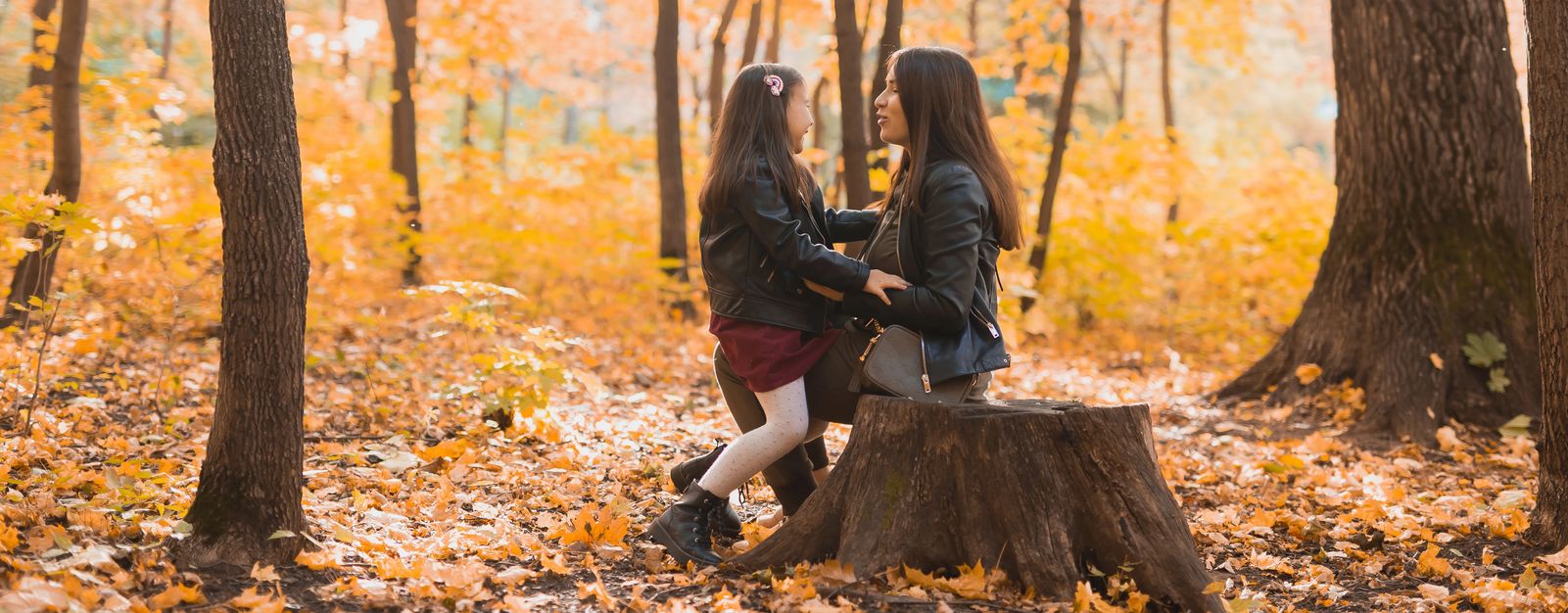Autumn Awakenings
Ah, autumn! That tantalizing time of year when Mother Nature wows us with a variable smorgasbord for the senses: multicolored leaves, harvest moons, pecans, pumpkins, crisp temperatures, and steaming mugs of apple cider with fragrant cinnamon. Autumn is an opportune time to let nature become your educational guide. Maria Montessori understood the importance of learning through nature. Children develop their minds and bodies through their senses and interactions with nature. This is a basic premise of the Montessori Method. Hands-on activities, sensory experience, and education through movement are at the root of every Montessori lesson.

“… the first thing his education demands is the provision of an environment in which he can develop the powers given him by nature. e have to adjust our minds to doing a work of collaboration with nature, to being obedient to one of her laws, the law which decrees that development comes from environmental experience.” (Maria Montessori, The Absorbent Mind)
Enticing as New England’s famous foliage might sound this time of year, travel is not a prerequisite when it comes to enjoying autumn with children. Keep it simple, and head outside to your own backyard, garden, or local park. Take a leisurely nature-walk, letting the child set the pace. Let her decide what is interesting: is it a bug, a bird, a leaf? Understand that he may not be thrilled in the things you find fascinating, but may become completely engrossed in something you might have missed altogether.

I recall watching my young son as he studied the intricate details of a leaf. He was initially attracted to the vibrant color of the Aspen leaf. He picked it up and looked more closely, observing the spade-like shape and the way it twirled when held by the stem alone. He smelled it and felt the smooth surface. He held it up and let the sun filter through.
“Mom, there is a whole tree in this leaf,” he said, pointing out the way the main vein of the leaf divided into smaller and smaller “branches.” Each leaf seemed to contain a mini-blueprint of the mother tree. It occurred to me that the leaf was like a map of the way children learn. Children learn by exploring, first noticing the main concept, and then following the smaller paths as they branch into ever finer detail. As Maria Montessori discovered so long ago, children come into this world hard-wired to seek information and naturally ready to learn.
“The secret of good teaching is to regard the child’s intelligence as a fertile field in which the seeds may be sown to grow under the heat of the flaming imagination.” (Maria Montessori, To Educate the Human Potential)
Children also have an inborn love for plants, animals, and all living things. We can help nurture the child’s instinctive connection with the natural world through activities such as gardening, hiking, setting up bird feeders, or helping with pet care. Gardening is especially ripe with opportunities for growth (if you’ll excuse the phrase.) Children can learn to plant, care for, identify, and harvest plants. Encouraging a connection with nature helps us (adults and children) to unplug and reawaken our senses.

“Children have an anxious concern for living beings, and the satisfaction of this instinct fills them with delight. It is therefore easy to interest them in taking care of plants and especially of animals. Nothing awakens foresight in a small child […], so much as this.” (Maria Montessori, The Discovery of the Child)
Autumn is magical, but passes quickly. Don’t miss your next chance to set down the phone, turn off the computer, and get outside with your children. Take a walk, slow down a bit, and follow the child’s lead. Allow your senses to revive and take in the sights, sounds and smells around you. You may find that you lose yourself in wonder, right along with the kids. This is the beauty of being with both children and nature.




















